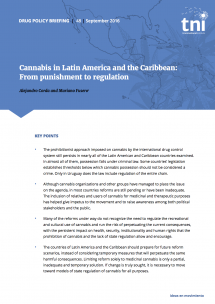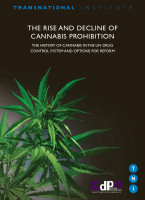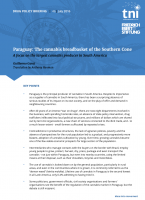Cannabis in Latin America and the Caribbean From punishment to regulation
Cannabis (or marihuana) is one of the most widely consumed psychoactive substances in the world. According to the United Nations World Drug Report, 183 million people, or 3.8% of the world’s population, used cannabis in 2014. Its cultivation was also reported by 129 countries. Cannabis is subject to the United Nations System for International Control of Narcotic Drugs and Psychotropic Substances (hereafter “drugs”) and is the most widely consumed of all the drugs. According to that control system, cannabis is among the substances with the strictest legal status; they are the most prohibited, supposedly because of the harm they cause and their lack of medical usefulness.

Authors
Nevertheless, its medicinal, spiritual and social use has been recorded in different places and times in human history, without serious associated consequences. Its prohibition began in the early 20th century, even though there were—and are—no records of overdose deaths, and public health risks are relatively low, even compared to other psychoactive substances with less strict legal status, such as alcohol and tobacco.
- The prohibitionist approach imposed on cannabis by the international drug control system still persists in nearly all of the Latin American and Caribbean countries examined. In almost all of them, possession falls under criminal law. Some countries’ legislation establishes thresholds below which cannabis possession should not be considered a crime. Only in Uruguay does the law include regulation of the entire chain.
- Although cannabis organizations and other groups have managed to place the issue on the agenda, in most countries reforms are still pending or have been inadequate. The inclusion of relatives and users of cannabis for medicinal and therapeutic purposes has helped give impetus to the movement and to raise awareness among both political stakeholders and the public.
- Many of the reforms under way do not recognize the need to regulate the recreational and cultural use of cannabis and run the risk of perpetuating the current consequences, with the persistent impact on health, security, institutionality and human rights that the prohibition of cannabis and the lack of state regulation allow and encourage.
- The countries of Latin America and the Caribbean should prepare for future reform scenarios, instead of considering temporary measures that will perpetuate the same harmful consequences. Limiting reform solely to medicinal cannabis is only a partial, inadequate and temporary solution. If change is truly sought, it is necessary to move toward models of state regulation of cannabis for all purposes.


